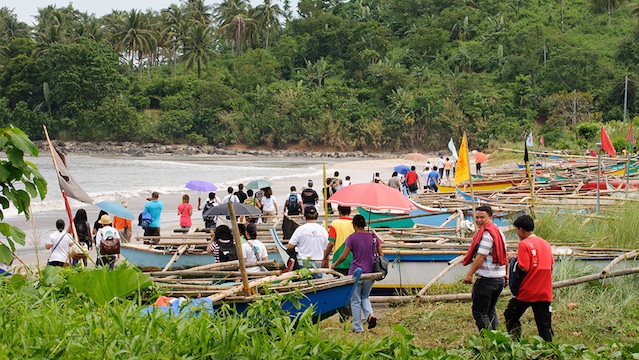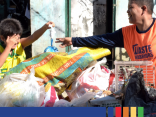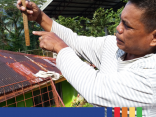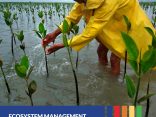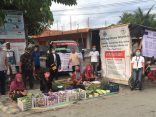(This report was first published online by Rappler.com on 16 October 2014. Original version is available in this link.)
By Voltaire Tupaz, MovePH Coordinator
MANILA, Philippines – Although battered by Typhoon Glenda (Rammasun), at least 4 towns in Camarines Sur – Bombon, Calabanga, Canaman, and Magarao – recorded no casualty after the disaster.
The reason? Good governance in disaster management, according to the representatives from towns who spoke in a conference held in Naga City on October 13.
In photo: GOOD DRR PRACTICE. Participants of "Ugnayan at Bahaginan" conference visit a mangrove reforestation project in Barangay Cagsao in Calabanga, Camarines Sur. (Jigs Tenorio / ACCORD)
(This report was first published online by Rappler.com on 16 October 2014. Original version is available in this link.)
By Voltaire Tupaz
MANILA, Philippines – Although battered by Typhoon Glenda (Rammasun), at least 4 towns in Camarines Sur – Bombon, Calabanga, Canaman, and Magarao – recorded no casualty after the disaster.
The reason? Good governance in disaster management, according to the representatives from towns who spoke in a conference held in Naga City on October 13.
“There were no casualties, households were evacuated in time, and there was not much need to conduct search and rescue,” Canaman disaster risk reduction and management officer Mario Alma told the participants from 20 local government units.
“Everything happened according to our contingency plans,” shared Alma at the conference dubbed “Building Resilience through Good Governance.”
Leadership by example
Officials of the town of Canaman, together with those from Bombon and Magarao, were first inspired by the example set by Calabanga in preparing for disasters.
Calabanga’s effective contingency plan won the town a Gawad Kalasag Award in 2011, a national citation for exemplary initiatives in disaster management.
With the assistance of humanitarian groups ACCORD and CARE Nederland, Calabanga undertook disaster risk reduction (DRR) activities in vulnerable coastal and upland villages which included the following:
-
Risk assessments
-
Trainings
-
Contingency planning
-
Drills
-
Small-scale mitigation actions
According to Calabanga Mayor Eduardo Severo, adopting DRR was one of the most important decisions his town ever made.
“We are now reaping an increased number of marine and agricultural products, a secondary outcome of risk reduction activities that have recently proven effective during Typhoon Glenda,” Severo said.
Resilient livelihoods
Calabanga formed an alliance with Bombon, Canaman, and Magarao to address common risks. The towns are located in the same Bicol River flood plain.
Supporting the collaboration, CARE Nederland Representative in the Philippines Celso Dulce said, “We realize that our programs should consider the larger Bicol River Basin landscape if we are to be effective.”
According to the humanitarian groups which assist the towns, the coordinated action can better address the roots of disaster risks across their common ecosystems and landscapes.
Through a statement, the conference participants committed not only to “mainstream climate-smart and ecosystem-based DRR into development plans, but also to engage in coordinated action to address common risks.”
In photo: GOOD DRR PRACTICE. Participants of "Ugnayan at Bahaginan" conference visit a mangrove reforestation project in Barangay Cagsao in Calabanga, Camarines Sur. (Jigs Tenorio / ACCORD)

